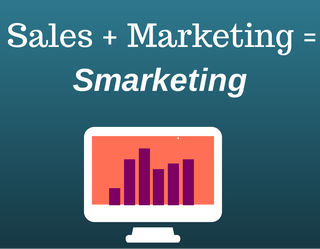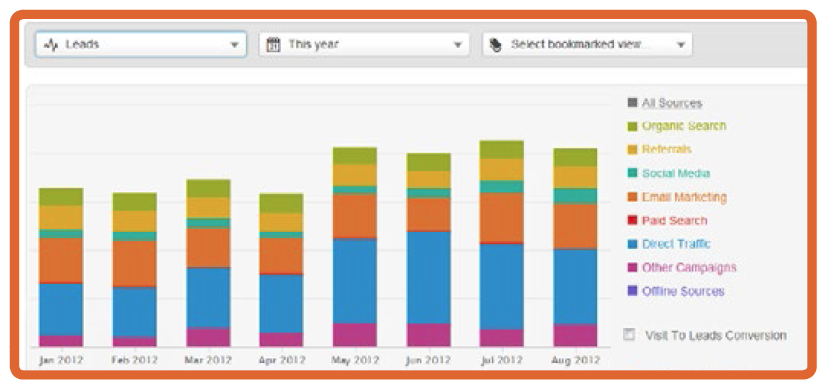
Successful Smarketing requires your sales and marketing team to work together by using the same definitions and sharing the same goals. One important aspect in this regard is developing a unified picture of the funnel including the terminology you use for each stage.
How to Define Your Funnel Stages
One of the easiest ways to define funnel stages is to adopt a common terminology such as the following:
- Visits
- Leads (or Information qualified leads)
- Marketing qualified leads
- Sales qualified leads
- Opportunities
- Customers
How to Define Your Funnel Stages: Marketing Qualified Leads
Your next challenge is to build a definition of marketing qualified leads (MQLs). This is an important stage in the funnel as it is the point where the marketing team may transfer leads to the sales department or other actions may be required. Your definition of a marketing qualified lead will be specific to your company, but it must encompass two elements. Leads must:
- Be a good fit. Leads that meet his criteria will closely match the profile of your ideal customer.
- Be interested. Activity that suggests interest can include requesting further information, downloading ebooks, and attending webinars. In contrast, a single visit to your website or recent subscription to a newsletter does not indicate strong interest.
If leads meet both criteria, they are hot and require followup from your sales team within 24 hours. In other cases, you need to take a different course of action; for instance, leads that are a good fit but not yet highly engaged should remain with your marketing team for nurture. Leads that are very interested but not a good fit, on the other hand, are usually worth passing to a sales rep for a low-cost followup. Finally, those that meet neither criterium are a waste of team and best removed from your communication stream.
Defining Your Company’s MQLs
The last stage is to arrive at a definite description of MQLs that fits your company’s needs by considering the following:
- The behavioral history of recent customers such as the average number of actions they take before becoming a customer.
- Patterns indicating the closing of a lead.
- The close rate for activities a lead can take before becoming a customer.
MQLs are leads who are both a good fit and match the patterns of recent customers, particularly engaging in activities with high average close rates.

